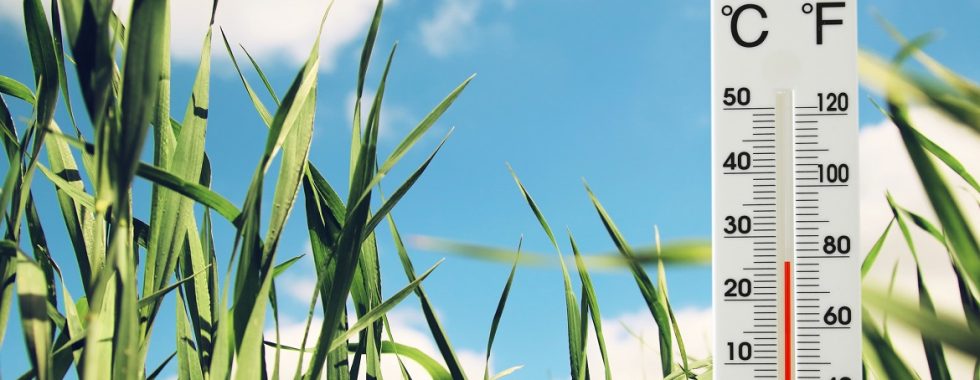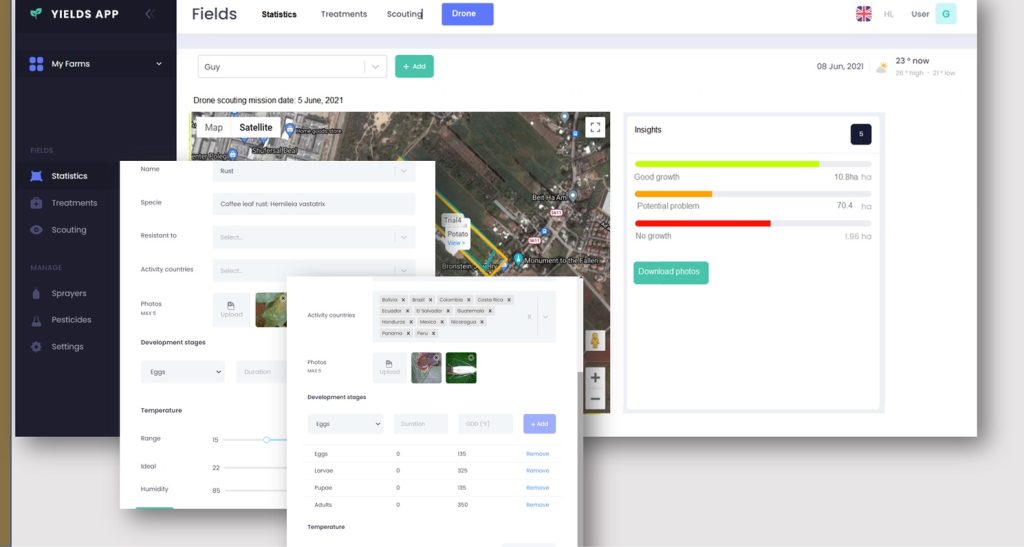Prediction of Pests Using Growing Degree Days
Growing degree days (GDD) is a measurement of heat accumulated over time. Farmers use GDD to predict both the growth stage of the crop, as well as for predicting the occurrence of pests and the time when they should begin using pesticides to prevent pest damage. The higher the GDD, the faster the pest will develop.
GDD is the measure of heat accumulation required for the development of many insects.
Growing degree days (GDD) is the measure of heat accumulation required for the development of many insects. It is calculated using the daily maximum and minimum temperatures and a base temperature.
GDD = (Tmin + Tmax) / 2 – Tbase
The base temperature used in calculating GDD depends on which insect you’re looking at. The base temperature is the temperature below which the pest does not develop. For example, if you’re calculating growing degree days for Spodoptera exigua (a moth known as the beet armyworm), then the base temperature would be 55°F / 13°C. This means that every day with an average temperature higher than 55°F / 13°C will have GDD greater than zero. Any day with an average temperature below 55°F / 13°C does not count toward growing degree days, and GDD for that day will be equal to zero (since it doesn’t add any heat to the system).
The first step in predicting the temperature requirement of an insect is to determine how much heat must be accumulated for specific development stages to occur. The accumulated GDD represents the integral from time 0 of daily mean temperatures above the base temperature
If we continue with the example above, according to the pest model, an accumulated GDDC (GDD calculated in degrees Celsius) of 52, or 94 GDDF (calculated using degrees Fahrenheit) is required for eggs to hatch. This means that once the sum of the daily GDDc values reaches 52, eggs will hatch. Therefore, the number of days it would take for the eggs to hatch will depend on the daily average temperatures. At colder temperatures it would take longer for eggs to hatch.
The same apply to other pests and pest development stages.
Based on the pest model and actual accumulated GDD values, the moment in which a certain development stage of a pest will appear can be predicted. This is a very helpful way to schedule treatments against the pest or be aware of the time when the pest may damage the crop.
Setting a Biofix
One of the challenges with applying GDD to predict the occurrence of a pest and schedule the treatments, is to determine the moment from which GDD is counted. A biofix is a measurable event that helps determining the date to begin counting GDD.
There are several different types of biofixes:
- A fixed date. A day of the year from which you start counting GDD for the pest. This date can be determined for specific geographical locations and is based on past experience and local research.
- Date of first flight of adults. Catching adults in pheromone traps is used as a biofix for many pests. Each pest may have its own definition for first catch, and the number of adults caught is also often considered. For example, a biofix could be defined as catching adults in pheromone traps for 3 consecutive days. Once this occurs, the biofix date is set.
- A certain daily temperature threshold.
Multiple possible biofixes
For some insects, there are multiple possible biofix dates. For example, the beet armyworm can have multiple generations in a single growing season. The insect develops through three life stages: egg, larva ,and pupa. The eggs hatch into caterpillars that feed on plants until they pupate; the resulting moths emerge from their cocoons after about two weeks to mate and lay eggs for the next generation of caterpillars. A species like this has several possible biofix dates because it is able to reproduce several times during a single growing season, while each generation will have its own development times based on climate conditions.
Predicting pest outbreaks using GDD
Growing degree days can be used to predict insect activity or forecasting pest outbreaks by looking at their biofix dates – or the moment when they become active enough to cause damage on a field scale.
Because GDD can be calculated from weather data, models based on GDD can predict pests even when weather conditions are variable. For example, if you have an area that has experienced low precipitation and warm temperatures for several weeks, but more recent weather events have been cooler and wetter than normal, you could use the GDD model to predict what will happen next. Another benefit of the GDD model is that it’s relatively easy to calculate and there is no need for special equipment in order to determine how much heat accumulation has occurred at their farm over time.
Today, digital platforms, such as yieldsApp, can predict pest and disease outbreaks using GDD in combination with additional models and data sources.





